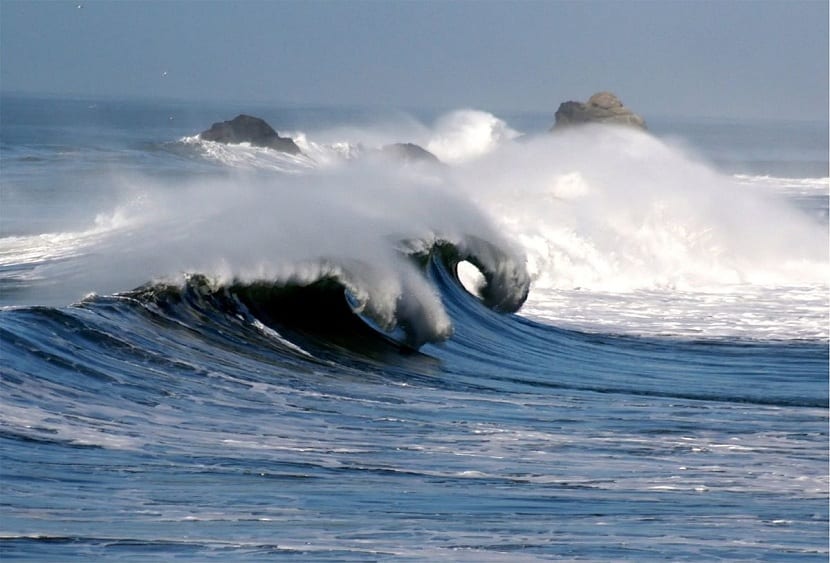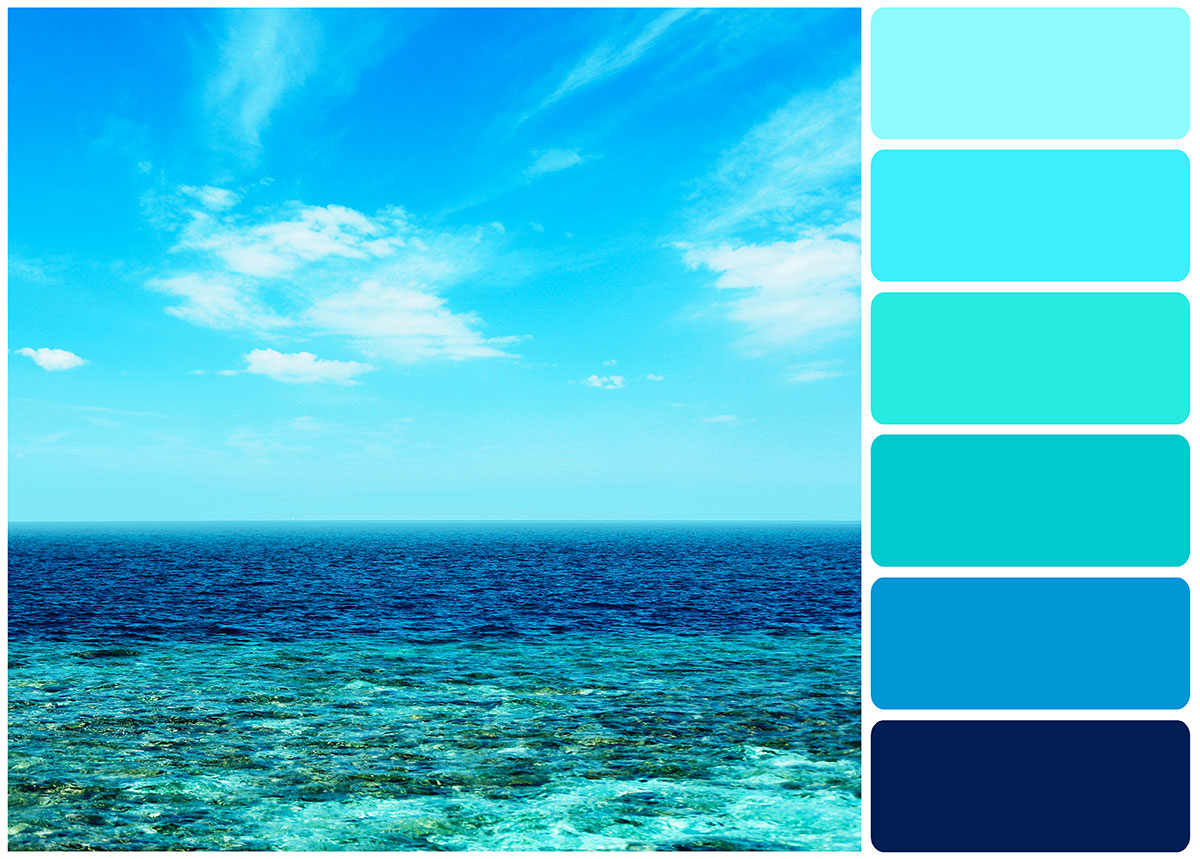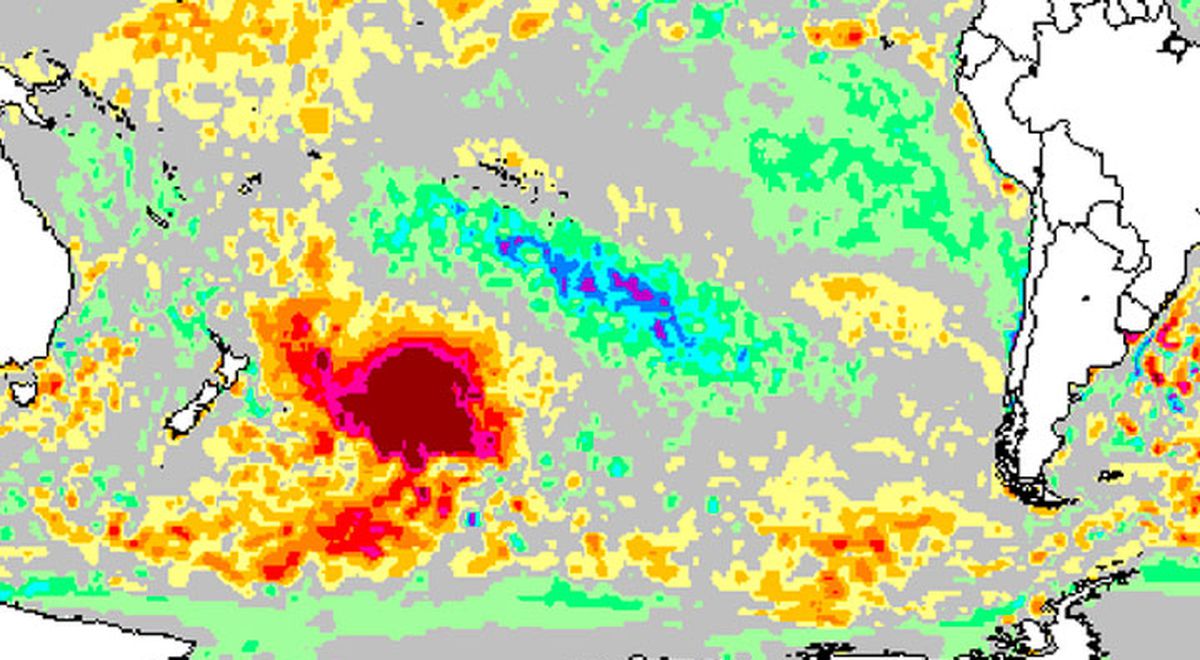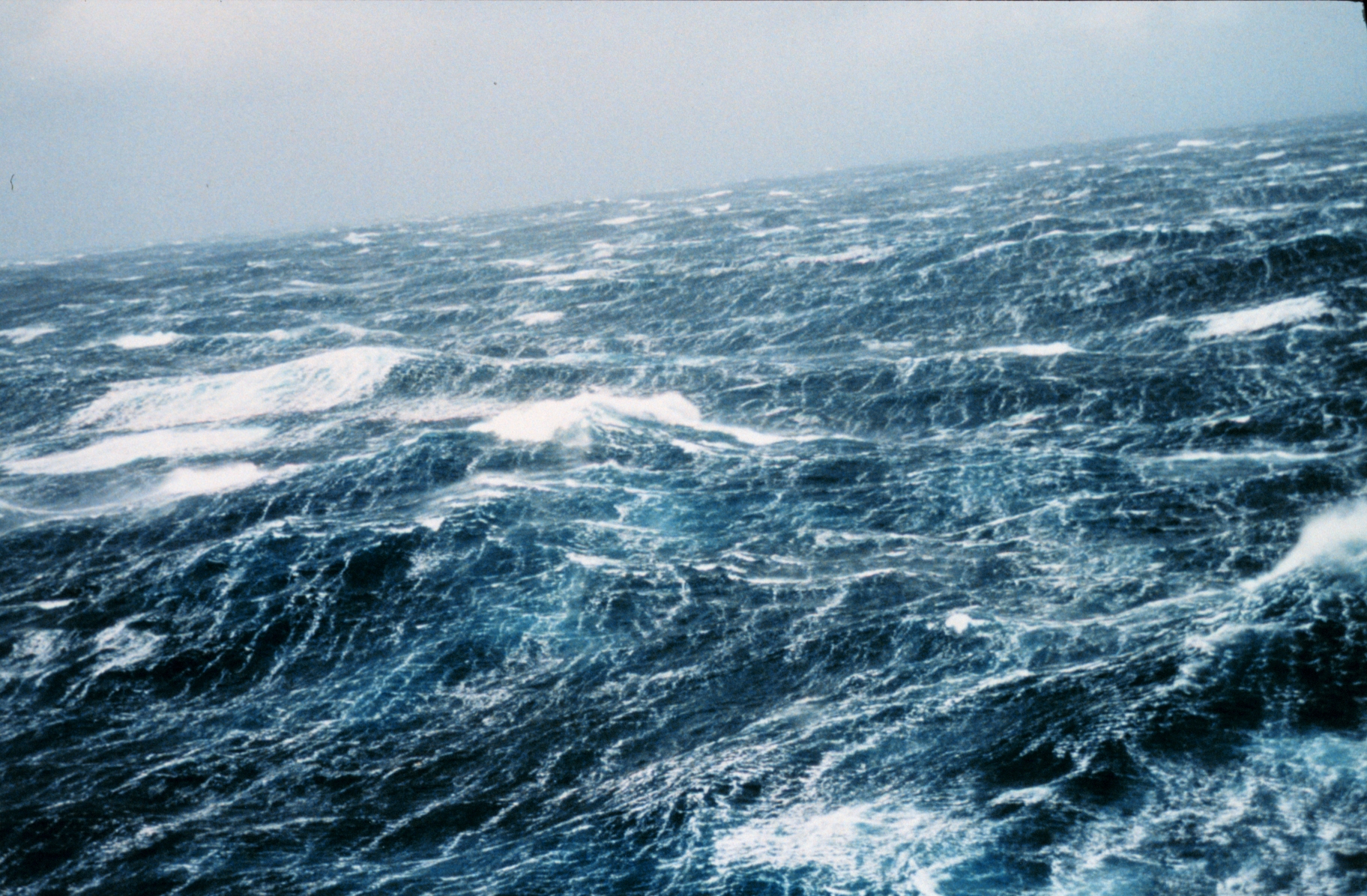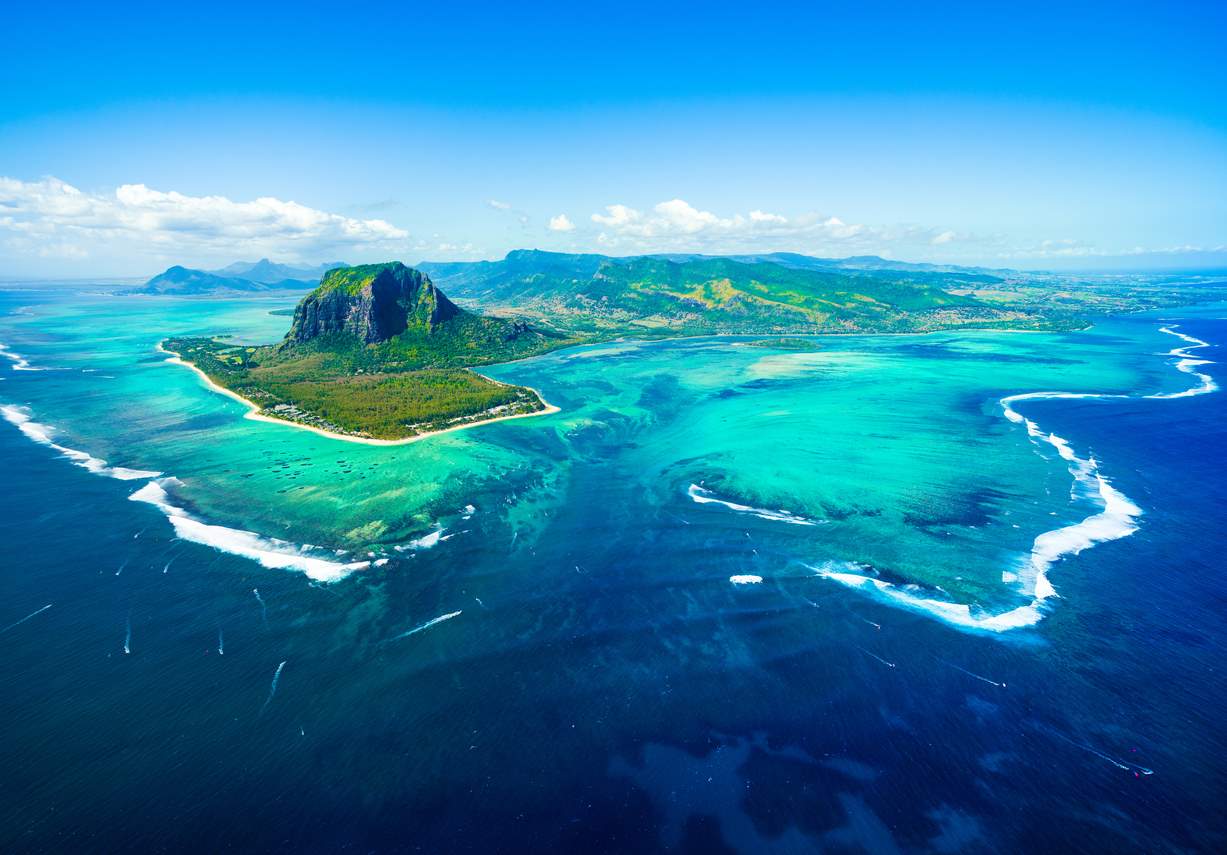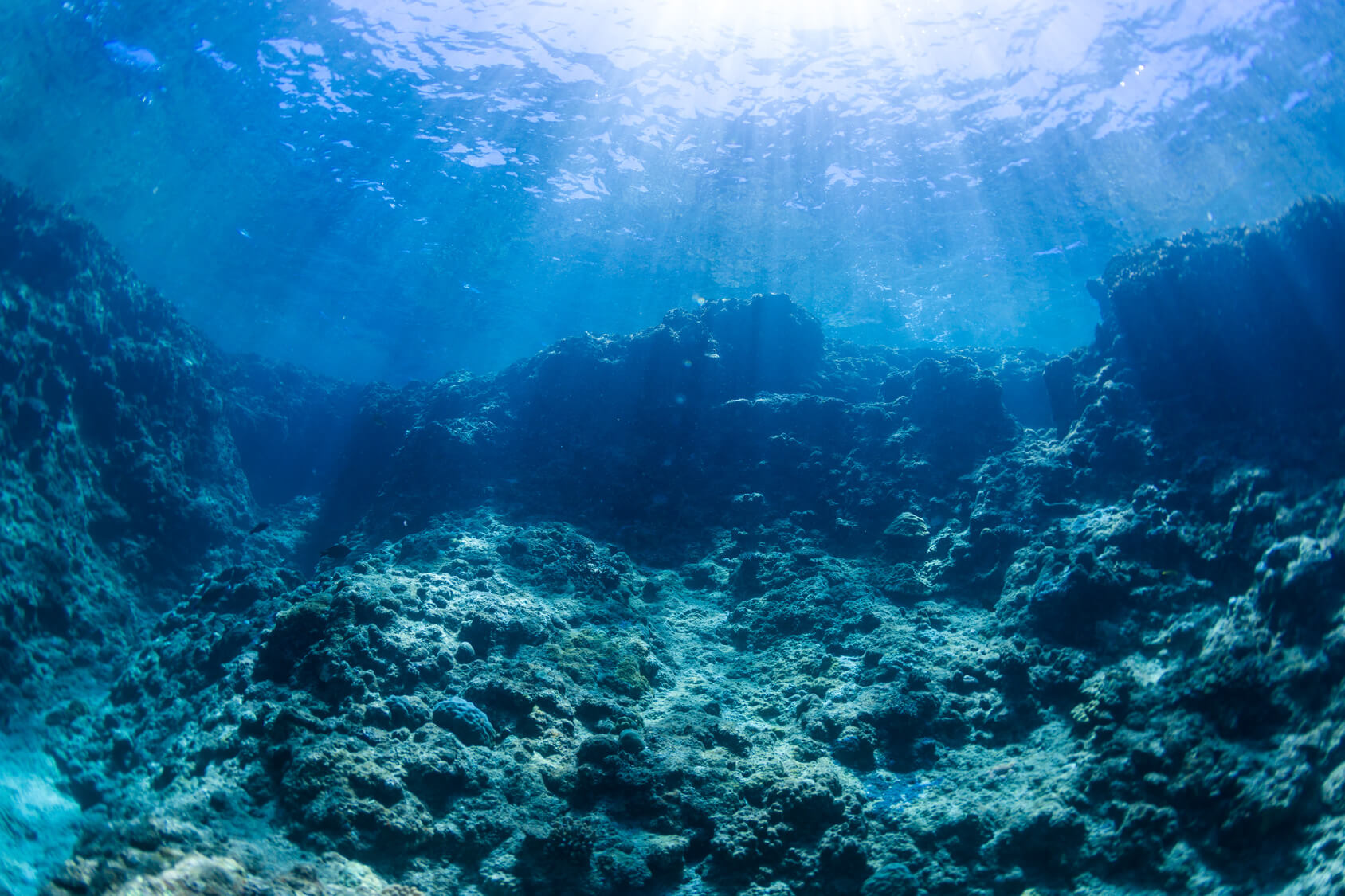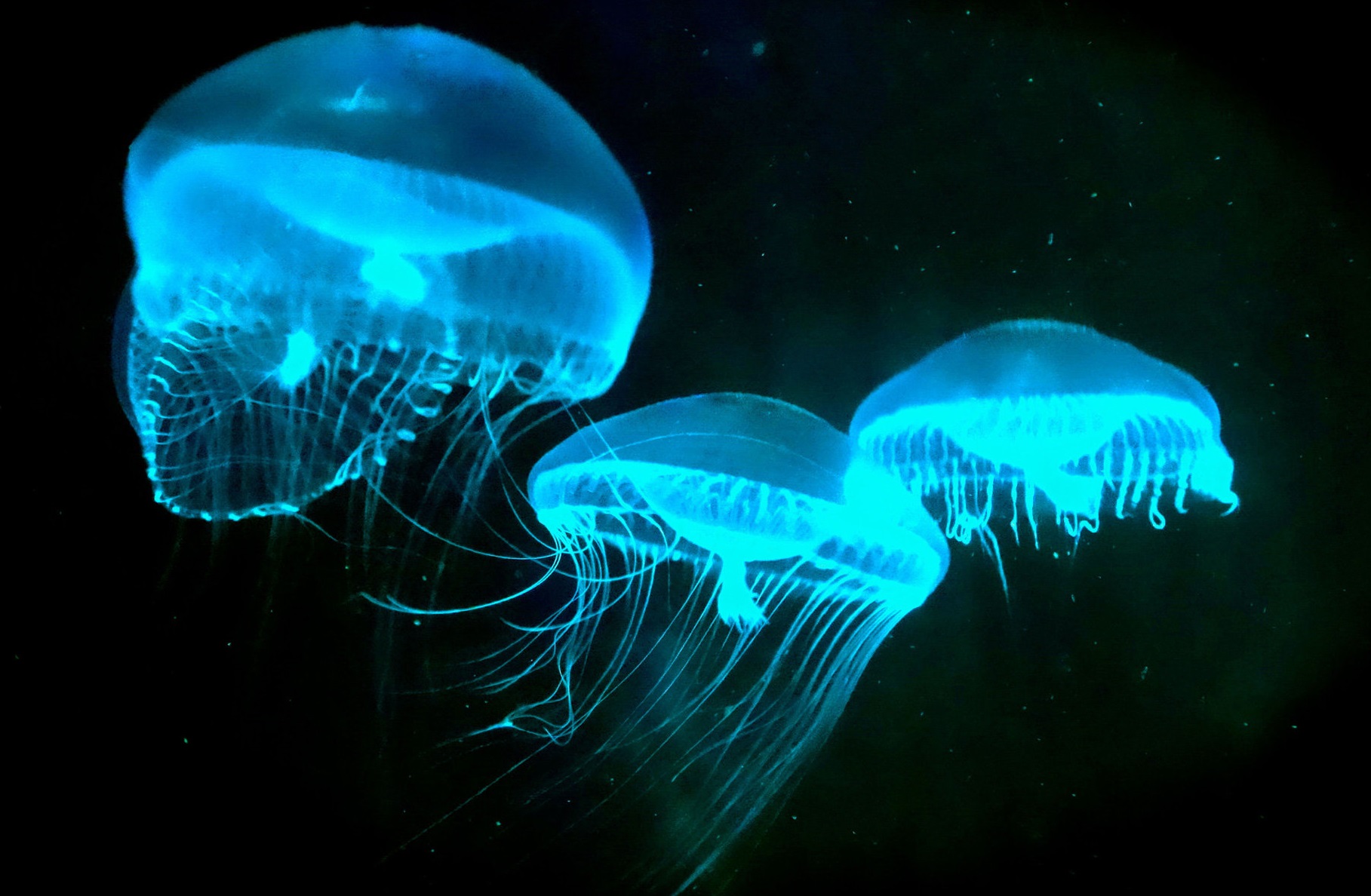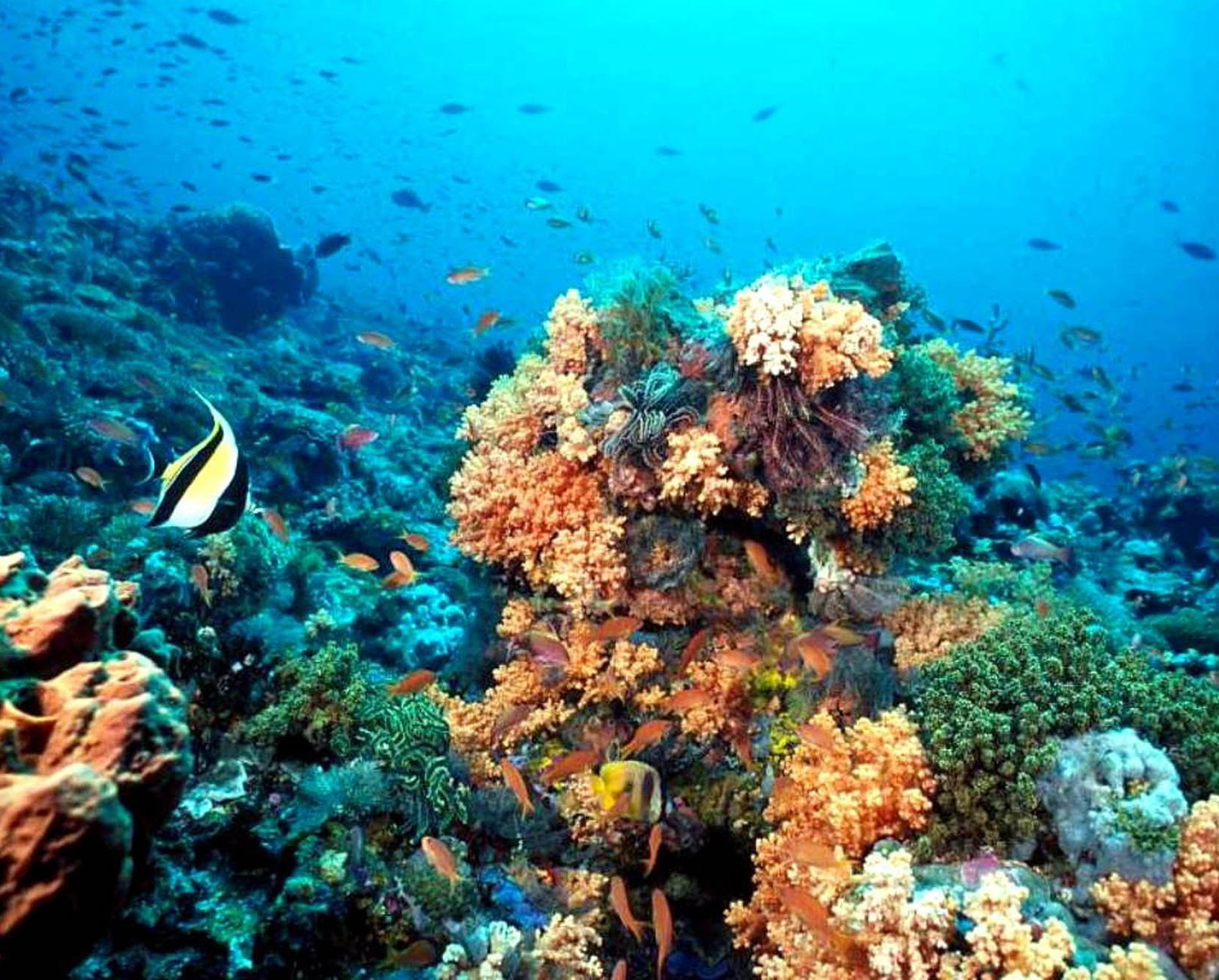The Oceanic Waters, is a term used for the first time by the philosopher Anaximander of Miletus, these are large portions of water in which the hydrosphere can be divided. The oceans represent 70.98% of the Earth and are divided into different types. In this article we present its characteristics, composition, types, importance and much more. Go ahead and learn all about this fascinating topic!
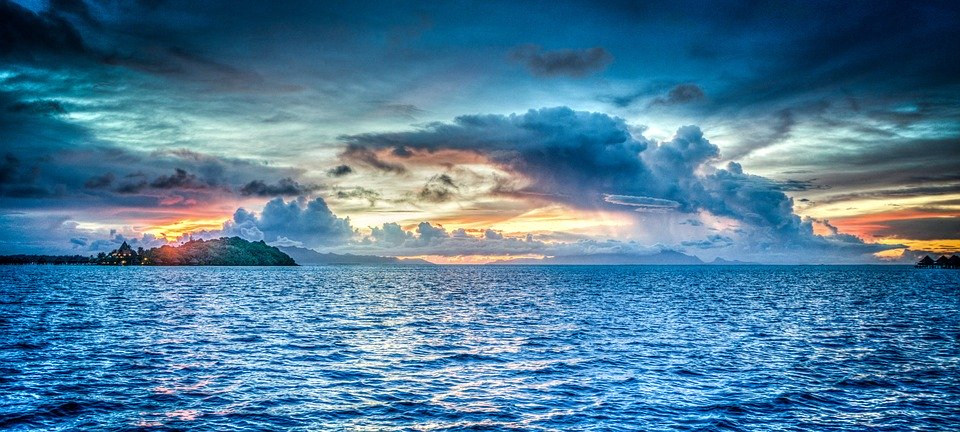
ocean waters
Oceanic waters are masses of water that represent 73.98% of the earth's surface. These oceans were formed about 4000 billion years ago, due to periods of intense volcanic activity and high temperatures, which made possible the melting of the original thick ice sheets. This made it possible for the liquid to run throughout the planet and separated Pangea, the great supercontinent that existed at the end of the Paleozoic era and the beginning of the Mesozoic era that grouped most of the land that emerged from the planet.
The separation of the emerged lands of the planet, caused what we know today as Continents and islands. The oceans formed are five, the Atlantic, Pacific, Indian, Arctic and Antarctic. They represent the most important and outstanding biological components of the planet that depend on three elements that are of vital importance for the correct functioning of these incredible and amazing ecosystems: marine currents, waves and tides. They constitute the main source of oxygen, for this reason, their protection and conservation is vital.
Fundamental Elements
sea currents: they are those that are formed thanks to the action of the wind and can vary in their strength, giving way to the Cariolis effect, which is nothing more than the relative acceleration suffered by an object that moves within a non-inertial rotating reference system when it varies its distance from the axis of rotation. In this case it will be determined by the direction of rotation of the Earth. This causes sea currents to turn to the right in the northern hemisphere and to the left in the southern hemisphere.
These occur near the surface of the oceans and often influence the climatic conditions of the continental areas with which they border. All of them are named after the countries where they originate, for example: the currents of the Canary Islands (Spain-Morocco), the California current (USA) and the Eastern Australia current.
Waves: This is another of the main elements of marine currents, since they give life to the oceans. They are waves that travel across the surface and their force helps the erosion process causing the modeling of coastal land surfaces.
The tides: its strength is attributed to the gravity exerted by the Moon and the Sun. The moon being the main responsible for being closer to the earth. These are the ones that mark the rhythms of rise and fall of the ocean waters, attracting its fluids in one of its axes. There are two types of tides, high tides or high tides, which is when the sea water reaches its highest height within the tidal cycle, and low tides or low tides, which is when the sea water reaches its lowest height.
Characteristics of Ocean Waters
Oceanic waters represent up to approximately 71% of the earth's surface. The oceans vary according to certain factors that define their importance and the role they play in the balance of the planet.
Salinity
The high salt content of ocean waters is mainly due to the evaporation process, it will also be determined by the type of ocean, the latitude and especially the depth. This amount of sodium chloride dissolved in the water represents 90% of the chemical components present in the water, in addition to magnesium, sulfur, potassium and calcium. It is estimated that the average amount of salt in the water is 30 to 50 grams per liter. This tends to decrease in areas where there are large river mouths or with high rainfall.
Color
Ocean waters themselves are colorless, but are perceived for physical reasons as blue. Some of the sunlight comes as white light, because it is made up of all colors (violets, blues, greens, yellows, oranges, and reds). And depending on how bodies absorb this light, colors are displayed. In the case of the oceans, when white light passes through water, it absorbs a part of the light beam, that is, the red and orange hues, but the blue and green hues pass by.
For this reason, when we are at a shallow depth (less than 5 meters), we can see the full range of colors and, as we go deeper, we only see green and blue tones, since it is the only part of the light beam that follows going through the water. The rest of the colors have already been absorbed. In the case of green tones, it is attributed to the amount of microalgae, which are nothing more than photosynthetic micro-organisms, called phytoplankton.
Being these capable of producing food from inorganic substances, being essential in the maintenance of life on Earth, as they are responsible for more than half of the oxygen we consume. When there is a greater quantity of these microorganisms on the surface, greater absorption of dioxide from the atmosphere. On the other hand are the waters of red hue, this happens due to an excessive proliferation of microalgae called dinoflagellates.
The toxins that are produced could poison fish, shellfish, and mammals. The consumption of shellfish or fish containing these toxins can cause death in humans. Brown water can also be found, this is due to the amount of sediment that is suspended in the water.
Temperature
Oceanic waters are capable of absorbing a large amount of heat emanating from solar radiation. Its heat capacity, that is, the temperature change system experienced by the oceans, is very high. Hence, this large mass of water is of great importance in the process of regulating the earth's temperature, because thanks to it the emission of heat is done slowly.
It should be noted that the temperatures of the ocean waters will be conditioned by its altitude, depth and by the winds that impact it. To get a better idea, in the Arctic the average temperature during the summer can reach 10°C but during the winter it drops to approximately -50°C with the presence of a floating ice cap.
In the case of the Pacific Ocean, because it is at the height of the equator, its waters can reach a temperature of 29°C. The Atlantic, due to its great extension that goes from pole to pole, passing through the equator, which causes the temperature to vary considerably. In some places it is as low as -2º C while in warm regions it can reach more than 30º C. On the other hand, the Indian Ocean, this belongs to very warm waters. In the northern part, the temperature almost never falls below 25 ° C.
heat spots
In some areas ocean waters experience a rise of 4 to 6 ºC above average. These areas can reach up to 1 million km², with these heat spots. This is due to the high pressure caused by the decrease in winds causing the surface layer of water to heat up, reaching up to 50m below the surface. The heat wave has created the well-known spot, it is a 1.600 km stretch of ocean that warmed between 3 and 6 degrees Celsius above the average temperature.
This ridge of high pressure calmed the ocean waters, meaning the heat stays in the water, with no storms to help cool it down. This area is located in the South Pacific and has been called a hot blob or hot spot. According to the projections of experts, the mass of warm water is moving east, in the direction of South America.. This negatively affects all marine life.
Density
Oceanic waters have a large amount of dissolved compounds, determined by two main factors: temperature and salinity of the water. For this reason, as the temperature drops, the density of the water in the oceans increases until it reaches freezing. Likewise, the increase in salinity causes an increase in the density of seawater. This causes the denser water to be at the bottom, and the lighter water to be found on top. Pure water is less dense than that of the oceans, which exceeds it by 2,7%, which makes it easier for objects to float.
Oxygenation
Oxygen, like water, are the vital elements for life on the planet. In this sense, ocean waters produce 50% of all the oxygen we consume, which is why it is called the lung of the earth. But at present, scientists say that production has decreased by 2%. This can be attributed to warming of the waters, causing dissolved oxygen to sink into the cooler waters. The oceans are the organisms responsible for us to breathe phytoplankton.
Without the presence of these autotrophic microorganisms, the seas and oceans would be great lifeless deserts. Thanks to their photosynthetic work, these microscopic creatures produce between 50 and 85% of the oxygen that is released into the atmosphere, higher than terrestrial ecosystems. In addition, this microorganism is capable of transferring about 10 gigatons of carbon from the atmosphere to the depths of the ocean to fix it, in the form of carbohydrates, to its biological structures.
Movement
Ocean waters are in constant motion both horizontally and vertically. This occurs both on the surface and in the depths. Among the movements of the oceans are the tides and the waves that periodically wet the coastal sectors, where the greatest biodiversity of the oceans is found. As for the currents, these allow the flow of plankton and exodus of some species that move motivated by mating, feeding or water temperature. In addition, this circulation of ocean waters at a planetary level is an important factor for climate regulation.
Surface horizontal circulation
These surface currents are the result of the friction between layers of water and the inertia of the earth's rotation movement that produces the winds. The warm currents that flow towards the polar zones and the cold currents flow from the poles towards the equatorial zone. This movement is called advection, that is, the process where moist air moves and reaches a cold surface.
These currents are what cause the oceanic turns or rotary currents, around the terrestrial equator. Another manifestation of these horizontal movements of ocean waters are the waves generated by the push of the wind towards the coasts. By increasing the speed of the winds to that extent increases the height of the waves. Other phenomena that can cause huge waves are seismic or volcanic events that can be devastating, as is the case with the well-known tsunamis.
deep horizontal circulation
The deep horizontal circulation originates as its name indicates in the deep zones. These are produced by the density and temperature between masses of water.
vertical circulation
As for the vertical movements in the seas, they are controlled by the differences in density, caused by variations in salinity, that is, by the content of salts and in temperature. As the salt content increases, the density increases, and cold water is generally denser than hot water. These movements of ascent and descent of oceanic waters are produced by the effect of terrestrial gravity influenced by the attraction of the sun and moon, which generates the tides. The deep waters tend to rise to the surface together with the effect of the marine relief.
Composition of Ocean Waters
The composition of ocean water is basically derived from volcanic activity and the action of water on rocks and land. It is a complex solution of various elements in which sodium chloride represents 77% of the salts.
inorganic compounds
Sodium chloride or better known as salt, is the main chemical component of ocean waters. This represents 77% of the total dissolved solutes in water. Magnesium chloride, magnesium sulfate, calcium sulfate, potassium sulfate and calcium carbonate can also be found in smaller quantities, as well as 49 other elements.
main sales
The main salts found in ocean waters are chlorine (Cl-), sodium (Na+), and to a lesser extent sulfate (SO₄²-) and magnesium (Mg2+) ions. As for the deep sea, it can be found nitrates and phosphates that fall from the surface layer where biological activity originated.
Organic material
In ocean waters, a large amount of organic matter can be found that comes from allochthonous materials, that is, that originates in a place other than its original origin, such as the land, and that enters the sea either through rivers or atmospheric pathway. It can also be released from the bottom of the oceans, mainly from marine organisms.
Gases
The oceans play an essential role in everyday life, since they are the lungs of the planet and the largest producers of oxygen.
oxygen cycle
The oxygen cycle that occurs through photosynthesis developed by microorganisms called phytoplankton, algae and plankton produce oxygen as a byproduct of photosynthesis. This process consists of converting carbon dioxide and sunlight into sugars that the body uses for energy. Most of the oceanic oxygen is found in the upper layer.
Carbon cycle
The oceans are the great accumulators of organic carbon, which is the equivalent of the CO2 in the atmosphere. In this case, phytoplankton in ocean waters fix organic carbon at an annual rate of 46 gigatons, and the respiration of marine organisms releases CO2. Here the cycle operates more slowly compared to other parts of the overall cycle. Thanks to it, the amount of carbon in the atmosphere and global temperatures are regulated.
Anthropic pollutants
Anthropic pollutants are those pollutants introduced into the oceans by human activity, which mostly originate from the combustion of fossil fuels such as oil, coal or gas. We can also find contaminants such as plastic that have come to form large oceanic plastic islands. It is undeniable that every day thousands of tons of foreign substances are incorporated into the oceans, which end up modifying their physical, chemical and biological characteristics, negatively affecting the biota.
Types of Ocean Waters
Oceanic waters are made up of large masses of water with special characteristics that classify it by temperature, salinity or the area it occupies. These surround all the continents and islands and are connected by different straits.
Oceans
Each ocean has particular characteristics and covers about two-thirds of the Earth's surface. There are 5 recognized oceans on the planet: the Arctic, the Atlantic, the Antarctic, the Indian and the Pacific.
Arctic Ocean
The Arctic Glacial Ocean is shallower and has the lowest temperatures, as well as being the smallest of the planet's oceans. It surrounds the North Pole and extends to the north of Europe, Asia and America. This ocean makes contact with the Atlantic Ocean to the north, receiving large masses of water through the Fram Strait and the Barents Sea. It is also in contact with the Pacific Ocean through the Bering Strait, between Russia and Alaska. Its salinity is low due to little evaporation and the constant supply of fresh water from the icebergs.
Atlantic Ocean
The Atlantic Ocean is the second in oceanic extension and is the one that separates America, Europe and Africa. It extends from the Arctic Ocean in the north to Antarctica in the south. The equator artificially divides it into two parts, the North Atlantic and the South Atlantic. It covers about 20% of the Earth's surface.
Antartic Ocean
This Antarctic Ocean is located in the southern part of the planet, surrounding the Antarctic continent in 360 °. It borders the Atlantic Ocean, the Pacific Ocean and the Indian Ocean. It is considered the second smallest ocean on the planet. Its temperature is low, ranging from 10 °C on the hottest days to -2 °C. This factor makes its waters have low salinity due to the influence of the melting icebergs.
Indian Ocean
The Indian Ocean has a large area, making it the third largest on the planet after the Pacific and the Atlantic. In it there are seas and areas of great importance, but it must be taken into account that it is the only one of the three large ones that does not extend from pole to pole. In terms of its temperature, it is the hottest. In the latest records, it was 1.2ºC when the average is 0.7. This is due to global warming due to the greenhouse effect. In this ocean are the Red Sea and the Persian Gulf.
It has an average depth of 3.741 m and the maximum in the Java trench with 7.258 m. The temperature almost never drops below 25 ° C except the one near Antarctica, it drops to about 0 ° C. and the salinity of 34,8%.
Pacific Ocean
The Pacific Ocean occupies a third of the earth's surface, which is why it is considered the largest, since it occupies 30% of the earth's surface and is the deepest, which is why it harbors many mysteries. In it are the six deepest ocean trenches, as is the case of the Las Marianas trench with 10.924 m. and the Challenger Deep with an approximate depth of 11034 meters. Its coastline covers approximately 135,663 km. Its winds are considered uniform with little chance of forming cyclones.
As for its temperature, it can vary according to latitude, which can range from −1.4 °C to 30 °C, which makes its salinity vary. Their movement will be determined by the hemisphere, to the north they circulate clockwise and to the south it is the other way around. In this great ocean you can find 25 thousand islands. The Pacific has important oil and natural gas fields. It is also of great commercial importance thanks to its shipping routes.
Geographic areas
Oceanic waters are distributed throughout the globe, which allows it to have specific characteristics depending on its location, that is, temperature, solar incidence, nutrients and ecosystems. Sunlight penetrates to a certain depth, it is estimated that it is 200 meters, which will have a direct impact on marine life and temperature variation.
oceans and seas
The extension of the waters is what marks the great difference between the seas and oceans. The seas have less extension, they are closed, delimited by geographical structures, that is, chains of islands or peninsulas. These have less depth, which allows them to receive more light and tend to be warmer, which facilitates the development of biodiversity. The seas are located between the mainland and the oceans, which makes them more vulnerable to pollution.
For their part, the oceans are large expanses of water separated by continental configurations and ocean currents. These are open and have greater depth. This immense surface of salt water has various marine currents. Its temperature is lower due to the depth it presents and it is approximately 4 degrees anywhere. Few animal and plant species are found in the oceans due to the great depth and low temperatures.
Gulfs, Bays, Coves
They are forms of penetrations of the sea into the land. These have less depth. In the case of the gulfs, they are a large part of the sea, enclosed by points or capes of land. The bays, are an entrance to the sea on the coast that has a considerable extension, that is to say, it is a geographical accident with characteristics similar to the gulf, which is a portion of the sea between two capes and the coves, it is an inlet of water of smaller than a bay and has the narrowest connection mouth with the open sea. All of them have less depth and receive continental influence.
Estuaries and Deltas
Both estuaries and deltas are forms of interaction between the land and the sea, so they do not become completely terrestrial or even marine, since there the salty waters are combined with the fresh ones and the cloudy ones with the clear ones. Estuaries are a kind of arm of the sea that extends into a river and deltas are the land between the arms of a river and its mouth.
In both cases, these are areas where large rivers flow into the sea or directly into the ocean, where the latter is deeply influenced by the river's waters, lowering salinity and increasing sediments and nutrients. The system of waves and tides, the load of sediments and the flow of rivers are the determining factors in the formation of deltas and estuaries.
lagoons
The lagoons can be described as accumulations of oceanic water on the coast forming a shallow lagoon, which are separated from the sea by a sandy barrier in almost its entire extension, since it remains connected to the sea in certain sectors. In this geographical accident, the oceanic water absorbs solar radiation at its maximum and therefore the temperature increases.
by temperature
Oceanic waters vary depending on certain characteristics, including temperature, which will be determined by latitude; the presence of ocean currents and depth. Hence, there are warm and cold waters, which in turn is closely related to the nutrient content. Thus, warm ocean waters have fewer nutrients than cold waters.
By salinity
The high content of dissolved salts in ocean waters is its greatest characteristic. These have on average about 35 grams of salts per liter of water. This can vary based on location relative to the equator and poles, as well as temperature and rainfall. Its intensity is based on evaporation, which as the temperature increases affects the increase in salinity. Another factor that influences is the amount of fresh water from the rivers. The Pacific Ocean has a higher level of salinity than the Arctic and less than the Atlantic.
It is worth noting that the Dead Sea could seem like the saltiest body of water in the world, but the waters of Lake Don Juan, in Antarctica, have a salinity of 44% and are barely 10 centimeters deep.
Precipitation, relief and salinity
Now, the Atlantic Ocean is usually saltier than the Pacific, rainy, that when the cold and salty surface waters of the North Atlantic sink and begin to move towards Antarctica, they activate a pattern of ocean currents that generate steam. The Rocky Mountains in North America and the Andes in South America block the transport of water vapor from the Pacific Ocean to the Atlantic.
Precipitation helps regulate salinity levels, since the waters evaporate and fall as rain or snow, which causes the salts to degrade and become sweeter. As for the oceanic relief, this is modeled by the movements of the crust forming volcanic mountain ranges, deep trenches, basins and plateaus, in which gentle slopes, rounded and uneven shapes predominate thanks to the action of erosion.
by light
Oceanic waters have greater and lesser depth, which allows them to be more or less exposed to the penetration of solar radiation, which has the physical property of propagating in the liquid medium. Based on this, we speak of the euphotic zone and the aphotic zone for those depths where sunlight does not reach. darkness of ocean water is comparable to that of the darkest night.
euphotic zone
Euphotic zones have good sunlight because they are not as deep. They are found from 80 to 200 meters deep, facilitating the photosynthetic processes of phytoplankton and macroalgae. Here 90% of the life of the oceans develops. These areas are also affected by the turbidity of the water due to the different sea currents.
aphotic zone
Unlike the previous one, the aphotic zone is where the solar incidence is very little or null. It ranges from 200 meters to the abyssal depths. In these sectors it is not possible to carry out photosynthesis and the living beings that inhabit there live and feed on the waste that falls from the upper zone. Here the only other source of light is some species of bioluminescent fish. In these waters the average temperature is between 0 and 6 °C.
Vertical zoning and horizontal
Oceanic waters are divided into vertical and horizontal floors. The verticals determine ehe littoral or fital system, which is nothing more than the coastline to the limit of the continental shelf or to the lower limit of marine vegetation. This is subdivided into supralittoral, mesolittoral, infralittoral, and circalittoral.
There is also the deep system that includes from the slope of the continental platform to the deepest depths of the sea, that is, marine trenches or abysses, of which three zones are distinguished: bathyal with 3 thousand meters, abyssal between 6 thousand and 7 thousand meters; and the hadal with 7 thousand meters of depth in which the marine trenches are included.
The horizontal zone is comprised of the sea surface, also called pelagic or pelagic. In it, two large zones can be recognized: the neritic, which includes the mass of water that is above the continental base, that is, between the beach and approximately 200 meters deep; and and the oceanic one that is outside the continental base.
Coral reef
Coral reefs are of great importance for the development and preservation of biological diversity. They are found in warm, shallow waters, so they are low in nutrients. This is because the coral colonies become attractors of life that constitute a complex ecosystem. They receive enough light and are a shelter against currents, generating a complex food web.
Fun Facts about Ocean Waters
Did you know that the largest body of water on earth is the Pacific Ocean, with 166 million Km² and the The largest sea in the world is the Arabian (Arabian Sea). If all the salt in the sea were spread on dry land it would form a layer more than 150 meters thick, a height equivalent to that of a 45-story building.
Lake Don Juan, located in Antarctica, is the one with the saltiest water on the planet. Its salinity level is so high that it cannot freeze even though its temperature is about minus 50 degrees. It is twice as salty as the Dead Sea, which is eight times saltier than the rest of the oceans.
Another of the curious facts that the oceans harbor are the so-called plastic islands. There are seven as a result of the 8 million tons of waste that invade the seas and oceans. These are located in the Pacific, Atlantic and Indian Oceans, negatively affecting ocean life and the physical-chemical properties of the area's waters.
If you want to know much more about Oceanic Waters, watch the following video:
If you want to read more articles related to the environment, we recommend that you enter the following links.
